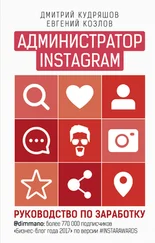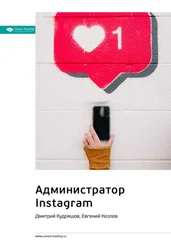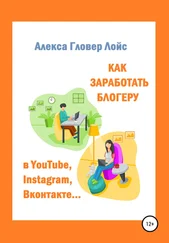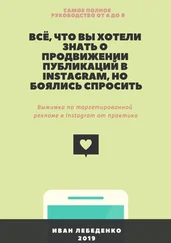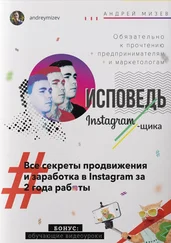Every effort has been made to trace all copyright holders, but if any have been overlooked the publisher will be pleased to include any necessary credits in any subsequent reprint or edition.
For further information on Polity, visit our website: politybooks.com
For Emily.
For Kate.
For Sherman.
Our better halves.
We are grateful to many people for supporting us in the writing of this book, from colleagues, to family, and beyond. We initially decided a book on Instagram seemed like a good idea, and we were a good team to write it, at the Association of Internet Researchers (AoIR) annual conference in Berlin in 2016. AoIR has been the intellectual home for all three of us, and there are so many friends and colleagues in that, and subsequent conferences and exchanges, who have helped shape our thinking about Instagram and visual social media cultures.
Many of our scholarly friends and colleagues have contributed to our thinking about specific parts of this book, and supported us as we have written; we would like to thank in particular Greg Acciaioli, Kath Albury, Sophie Bishop, Jean Burgess, Paul Byron, Nicholas Carah, Christina Chau, Gemma Cobb, Alberto Cossu, Rob Cover, Sky Croeser, Amy Dobson, Brooke Erin Duffy, Stefanie Duguay, Sara Ekberg, Katie Ellis, Liz Ellison, Alex Gekker, Tarleton Gillespie, Ysabel Gerrard, John Hartley, Anne Helmond, Natalie Hendry, Jenny Kennedy, Mike Kent, Ben Light, Ariadna Matamoros Fernández, Anthony McCosker, Lee McGowan, Kate Miltner, Peta Mitchell, Sharif Mowlabocus, Sabine Niederer, Sarah Oates, Gwyneth Peaty, Thomas Poell, Jill Walker Rettberg, Bernhard Rieder, Brady Robards, Richard Rogers, Natalia Sánchez Querubín, Eleanor Sandry, Michael Stevenson, Katrin Tiidenberg, Emily van der Nagel, Fernando Van Der Vlist, Son Vivienne, Katie Warfield, Esther Weltevrede, and Patrik Wikström.
Tim would also like to acknowledge the support of the QUT Digital Media Research Centre, where aspects of this work were funded by his 2015–2018 Vice-Chancellor’s Research Fellowship, and to thank his University of Amsterdam MA students, who provided inspiration and raised additional points of interest through their own Instagram research: Renate Brulleman, Anya Doshi, Annika Heinemeyer Nora Lauff, Abby Listerman, Anna Vallianatou and Donna Wielinga.
We would also like to thank all those who have offered feedback and suggestions at the numerous conferences, symposia, workshops, and other events at which elements of this book have been presented. In particular, Tama and Tim would like to acknowledge the participants of their Instagrammatics digital methods workshops, for their contributions and engagement and for bringing their own research interests to the questions and provocations we’ve asked, at: CCI Digital Methods Summer School (Melbourne, 2015; Brisbane, 2016); QUT Digital Media Research Centre digital methods series (Brisbane, 2015); Association of Internet Researchers (AoIR) digital methods preconference (Phoenix, 2015; Montréal, 2018); and Digital Methods Initiative Summer School (Amsterdam, 2017; 2018).
We would like to express our thanks to Mary Savigar and Ellen MacDonald-Kramer at Polity for their faith in this book, and their patience, professionalism and support in helping shape it into the best possible form it could be. We would also like to specially thank our sketch artist, mistercrow, for lending their artistic talents to this book, and acknowledge our appreciation to @boufesg, @collettemiles, and @ongxavier for allowing us to reproduce their Instagram images for our academic discussions.
Tama would specifically like to thank Emily for her patience, support and understanding while working on this book, and Henry, Tom, Rose and Lottie for reminding me that the very best of my life does not exist on social media. Emily’s dad, Geoff, and Tama’s parents, Margaret and Bob, have also been incredibly helpful and supportive during the time this was written. Tama would also like to thank Tim and Crystal: I wouldn’t want to write a book with anyone else!
Tim would like to thank Kate, first and foremost. Writing has not been easy lately, and this one in particular was a struggle; it could not have happened without your irreplaceable generosity and advice, kindness, support and patience, in the face of my challenges. I cannot thank you enough here. Tim also thanks his family: Elaine, Tony, Hannah, Jamie, and Anais; and in particular, thanks go to Tony for his incredible work in developing the early Instagram tracker and data capture tool. Finally, Tim would like to thank Tama and Crystal, for their enthusiasm and dedication to this project, for pushing it in new and exciting directions, and for their amazing work in making this book happen.
Crystal would like to thank her Instagram husband, Sherman, for supporting her ethnographic research on this book by obliging to take every #OOTD shot in the best possible natural light, being patient at every eatery when instaworthy food flatlays demand documentation, and for spiritedly indulging me whenever I ask you to choose between Instagram filters (even though everything looks the same to you because you ‘don’t do Instagram’). Crystal would also like to thank Tim for his friendship, collegiality, and immense penchant for witty but embarrassing puns, and Tama for his supremely generous mentorship since we first met in 2013, for sharing snippets of his family Instas that always brighten my day, and for his leadership in steering this book to completion.
This is not a book specifically about photography, which at first glance might seem quite odd when reading about Instagram. After all, Instagram is synonymous with the mass popularization of mobile, app-based photography. Filters and square frames, part of Instagram’s initial affordances, made millions of people armed with nothing more than an iPhone feel like they were crafting photographs that suggested the professionalism of paid photographers (regardless of whether these feelings were justified). Each Instagram filter certainly alluded to a way of manipulating and crafting a photograph to imbue it with a specific meaning. And yet, the most used Instagram filters soon became clichés, often suggesting that the Instagram user was trying too hard to make their image speak in a way it simply could not.
Rather, in this book, we argue that Instagram should best be understood as a conduit for communication in the increasingly vast landscape of visual social media cultures. We argue that the visual image, video and other combinations of these elements in Stories are first and foremost about communicating with one another. Instagram is a social media platform, but, we argue, the visual focus is particularly important in the success and relevance of the platform. As Instagram has grown from an iPhone-only app into a vast platform owned by Facebook, it has also had to wrestle with being a space where communication and commerce have overlapped, from the appearance of advertising to the rise of Influencers and a new class of content creators who strive for authenticity on a platform best known for selfies and self-representation. Moreover, as the platform amassed over a billion users, platform-provided filters have given way to socially-driven norms and what we argue is the templatability of visual social media on Instagram.
We argue that Instagram is more than an app, more than a platform, and more than a jewel in the Facebook ‘family’. Rather, Instagram is an icon and avatar for understanding and mapping visual social media cultures, whether on Instagram itself, or through the many ways the material world has sought to become ‘Insta-worthy’ in redesigning practices, cultural institutions and material spaces. Facebook wants it to be an Instagram world out there and this book examines to what extent that desire has succeeded, how Instagram has changed over time, and what elements of Instagram matter the most.
Читать дальше

